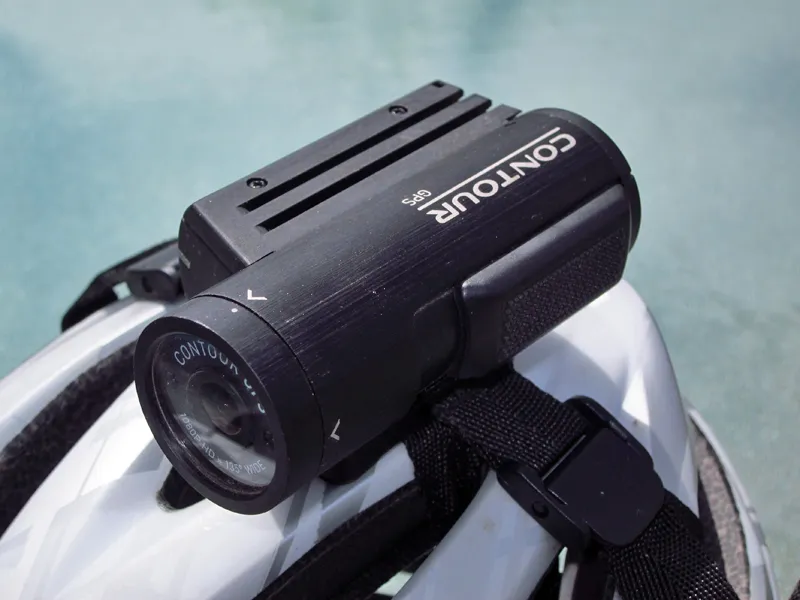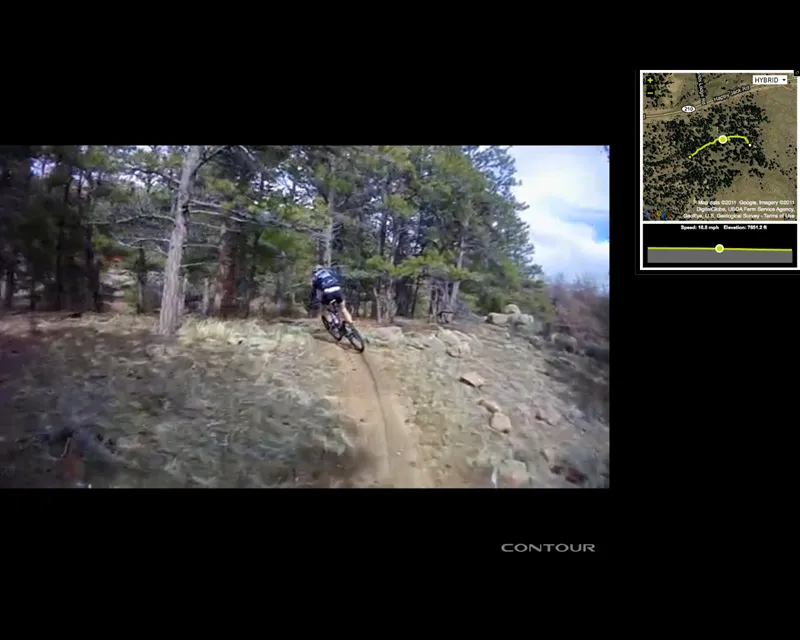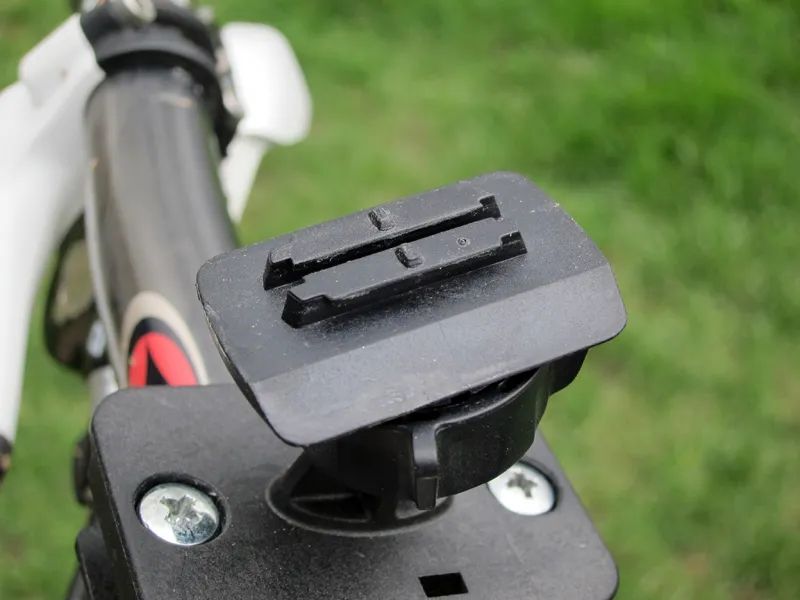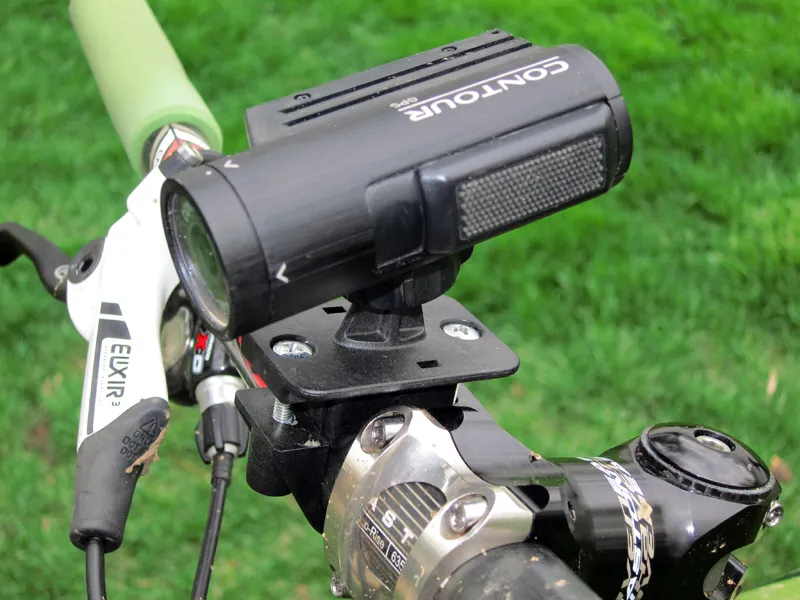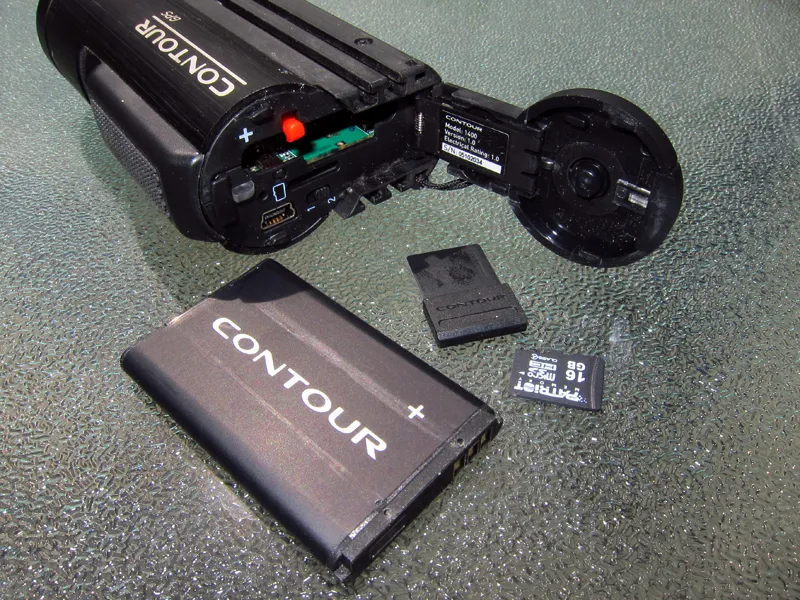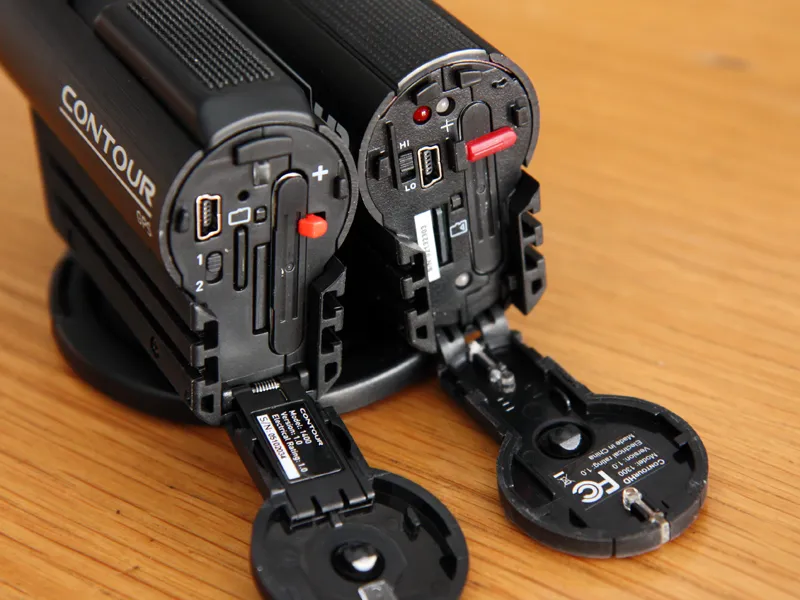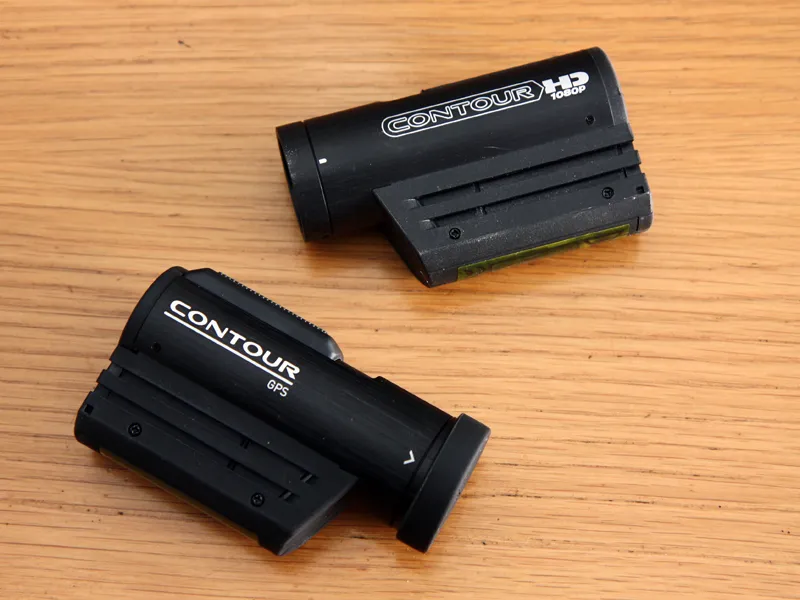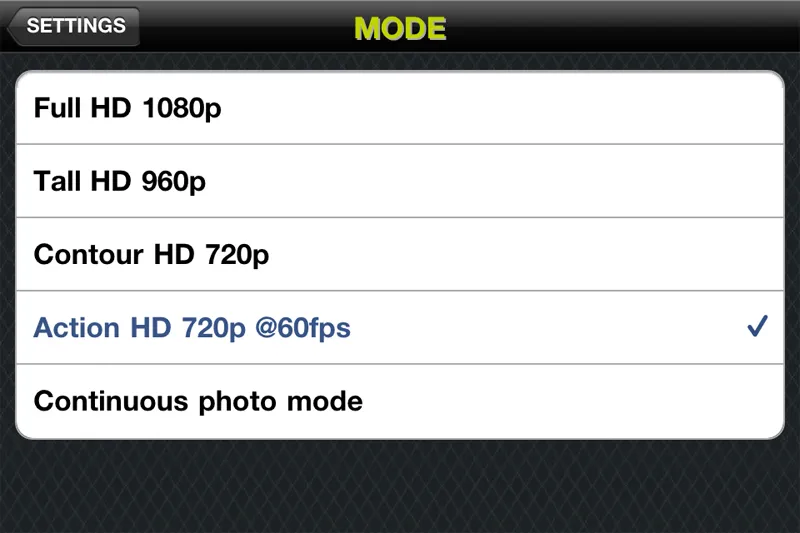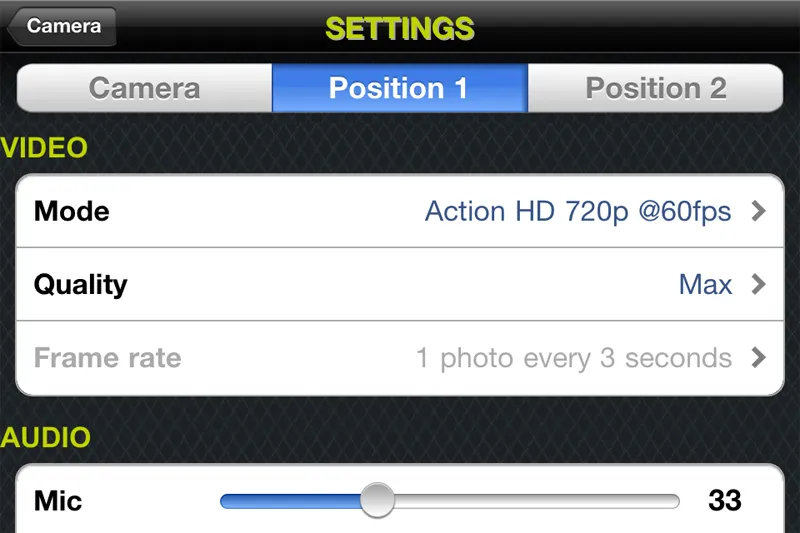The ContourGPS video camera certainly looks to have a lot going for it: embedded GPS hardware pairs your video file with real-time location information, it's stoutly built and easy to operate even with gloved hands, the rotating head quickly accommodates a wide variety of mounting orientations, and twin laser sights help line up your field of view. If that doesn't work, a new Bluetooth card add-on and associated iPhone app now offers a live view of exactly what the sensor sees.
Unfortunately, out on the trail or road, certain limitations become immediately apparent. The video output can be annoyingly shaky, the friction-fit interface is disappointingly crude, and many of the mounting options clearly aren't optimized for bike use.
A little too much coffee?
The biggest issue with the ContourGPS is its apparent lack of image stabilization. It's not a total deal breaker as the video stability is acceptable in most instances when the camera is hard-mounted to a secure foundation (and when shooting in 1280x720 pixels/60fps as per Contour's recommendations for bike use instead of the maximum 1920x1080p/30fps resolution). However, most users these days – especially trail riders – more often opt for helmet mounts and that's where things can get ugly.
Contour's 'Vented Helmet Mount' uses a pair of cam-locked straps to secure itself to a helmet much like many others but the integrated tilt feature built into its base is rife with play. Stuffing in some high-density foam or other similar materials to restrict the rotation helps but even then, there's still some slop in between the camera and mount itself, and that issue is much tougher to resolve. In addition, the bulk of the camera's weight is cantilevered off-center from the mounting point and thus inherently less stable than it could be.
Despite the apparently advanced guts of the ContourGPS, the slide-on, friction-fit 'TRail' interface seems inadequate for a product of this level. In theory, the camera slides smoothly on to the mount's rails and locks on tight once the raised nubs snap into the corresponding recesses. However, the fit is frustratingly inconsistent – in some cases it was easy to get everything joined together, in others the 'lock' position was a bit loose, and in yet others the fit was so tight that we needed tools. Either way, the fit also changes over time as the bits wear in.
Bike-specific mounting options are somewhat limited, and none of them is included with the base package. In addition to the vented helmet mount, there are also options for adhesive fixed-position and rotating mounts plus two bar mounts depending on diameter. But the stick-on mounts aren't terribly practical unless you've got a decent amount of reasonably flat surface on your helmet (like on a full-face lid, for example) and the bar mounts are awkwardly bulky and can't easily be adapted to other frame tubes. We had limited success with Contour's Roll Bar mount but even then, it was less than ideal.
Still good potential if you're willing to put in the time to unlock it – and get a little lucky
That all being said, the ContourGPS can produce some solid footage with very good color saturation, detail, white balance and contrast – all of which are custom tunable, too. Bear in mind that you also have to be okay with the somewhat narrow 135° viewing angle (which steps down even further to 110° in 1080p mode) and significant barreling from the tiny lens, though.
Contour
The ContourGPS in action; make sure you watch on the 720p setting for a true impression of the film quality
Contour offer five different video formats to suit the application at hand: Full HD (1920x1080p, 30fps); Tall HD (1280x960p, 30fps); Action HD (1280x720p, 60fps); Original HD (1280x720p, 30fps); and a 5MP still image setting that can be set to automatically shoot frames at 3, 5, 10, 30 or 60-second intervals. As previously mentioned, though, only the Action HD video setting is really usable on the bike due to its faster frame rate.
Operation is straightforward and simple, and the on-off slider is particularly well suited to action sports use with its raised, grippy surface and nicely tactile action. The power and "hidden" button located just ahead of the slider aren't nearly as nice to use though, as both are lacking in feedback.
One of the biggest draws of the camera is its neat integrated GPS functionality. The camera locks on to orbiting satellites with impressive speed – generally well under a minute – and Contour's bundled software package overlays your position onto Google Maps during playback. The two screens can be uploaded in tandem to Contour's own dedicated website (but the GPS information is lost when posting to YouTube). This can be nice to have if you're trying to remember the exact location of a particular clip but aside from that, it mostly strikes us as a novelty. Thankfully, you can switch the GPS off to save battery life if you don’t plan on using it.
The recent release of Contour's optional Connect View Bluetooth card pairs with a free iOS or Android app, effectively turning your phone into a wireless viewfinder – an especially useful feature since there's otherwise no way to sight the frame aside from the twin lasers that are virtually impossible to see in daylight. That 135° field of view makes this feature amust-have and thankfully, the card is pretty inexpensive at US$29.99. In addition to providing a live view of the action, you can also tweak the video settings without having to pair the camera to your computer.
As for the luck bit – unfortunately we experienced a total camera lock-up several times during testing when simply nothing worked. Most of the time the camera wouldn't record anything but in one memorable experience, the sighting lasers were stuck in the on position. Our only recourse was to remove and reinstall the battery – not entirely confidence inspiring.
Other details
Battery life is in line with Contour's claims, which is to say a somewhat skimpy 2½ hours or so. Additional Li-ion rechargeable batteries are US$29.99 and if you anticipate doing anything remotely extensive, you'll definitely want to make sure you've got one or two extra packs on hand. Contour include a 2GB MicroSD card with the camera – enough for up to two hours of footage depending on settings. The ContourGPS will accept up to a 32GB card, but most users will do fine with the included chip.
Contour's Storyteller software is reasonably useful, offering an intuitive interface and easy access to camera settings. However, editing options are very limited so a third-party software package is highly recommended. Riders who regularly head out in wet or especially muddy conditions will want to make note that the ContourGPS case is definitely not weatherproof in stock condition. Contour do offer a waterproof case, though.
Overall, the ContourGPS has a fair bit to offer on paper but we can't help but feel like there's a lot of room for improvement and definitely a few bugs to work out, which hopefully will be worked out in the recently announced Contour model.
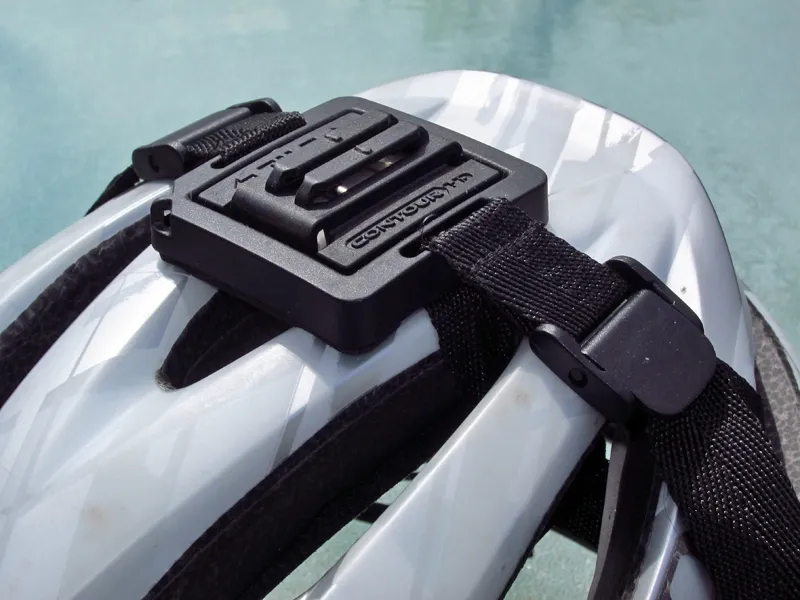
Contour's vented helmet mount secures firmly with twin nylon straps but the tilting base has far too much play
